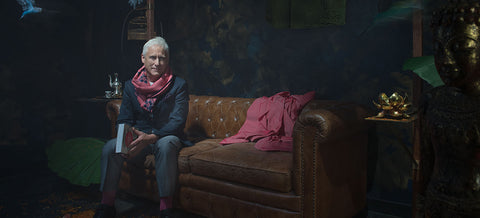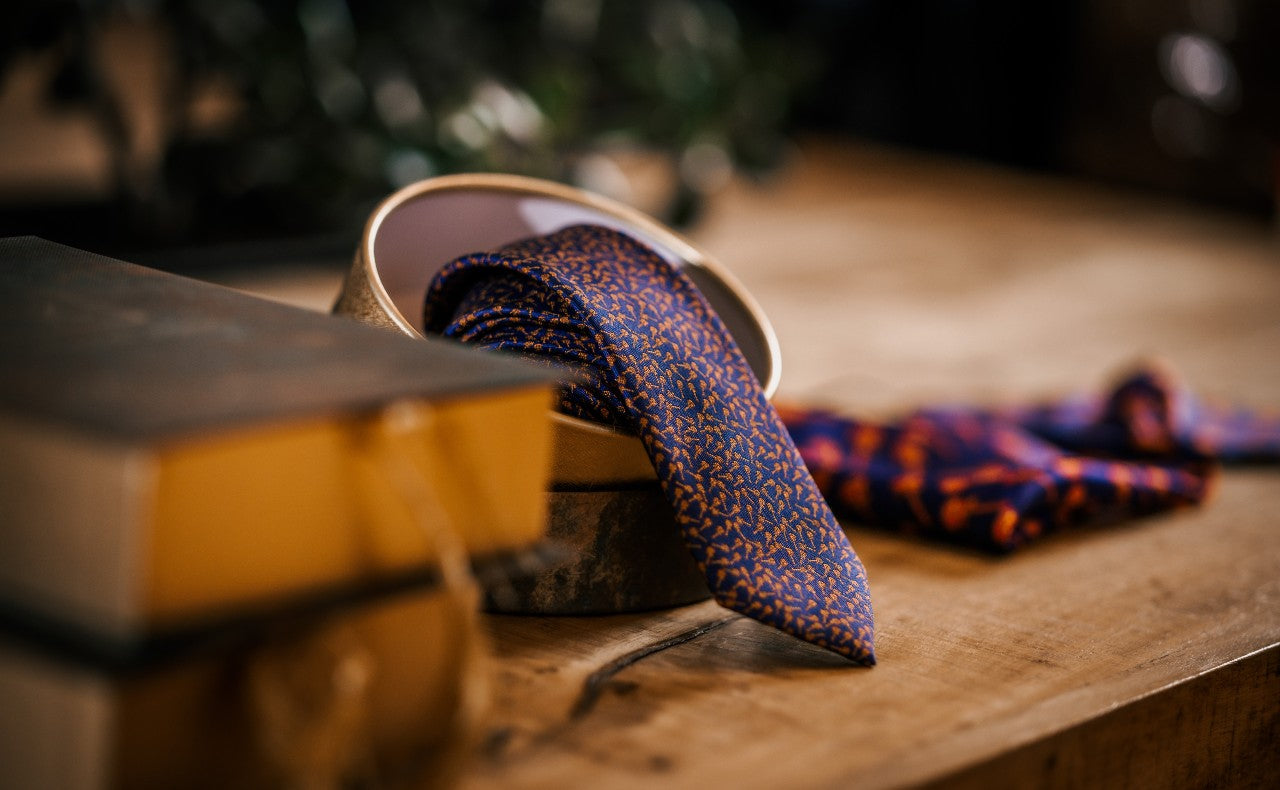
7 Signs Your Suit Doesn't Fit You Well | Men
You're trying on your suit, but you can't help but feel like something is off. Are the shoulders sticking out too much? Is the chest too loose?
How can you tell if your suit fits you well? This article will take you through everything you need to know about how a suit should fit for men, as well as going through some of the most common suit fitting problems and what tailors and designers do to ensure your suit fits.
The Different Fits of a Suit
What it means for men to have a suit that fits can be different from man to man.
Some suit tailors may use terms such as slim fit and classic fit as codes that refer to different fitting ‘types’ for men’s suits, but there are so many different ways of making a suit that these terms cannot cover all the possibilities.
Fashion design is making what does not yet exist, so Nathon does not use fitting types when speaking with clients. He learns what the clients needs are and suggests different solutions to address those needs.
For example, some may want a suit that is a slim fit for their body for a very special occasion like a groomsmen's suit for a wedding. However, if the client had a bigger body type, Nathon may recommend against slim fitting pants around the thighs as it may damage the suit sooner.
Other men may need a suit that needs more space in the chest and the waist to be comfortable because they intend to wear the suit frequently for work. A fashion designer can also recommend leaving more space in other places depending on how a man walks or moves to make the suit more comfortable and last longer depending on their lifestyle.
Another important thing to consider when designing a suit is the pants. How Nathon decides to design the pants of a suit can depend a lot on what the suit is for and the lifestyle, job, and even the personality of the client.
How a client carries themselves and moves is something Nathon pays attention to during a fitting session to inform different possibilities of designing a suit.
For example, if the client is going to be moving around a lot as part of their job or just takes wide steps by nature, it will be important to keep the thighs and crotch loose.
On the other hand, if the suit jacket is being tailored for a wedding and never going to be used again, then a slimmer pair of pants may be the better option for that client.
There is a lot to consider when designing a suit.
When it comes to looking nice in a suit, one size doesn’t fit all. This can make finding the right fit for you challenging, and identifying when a suit isn’t fitting you well even more so.
You should consult a fashion designer if you aren’t sure what you want from a suit, as a fashion designer works with you to create a one of a kind suit tailored to your needs. In addition to taking your measurements, Nathon Kong will take time to get to know you and your lifestyle and make recommendations on suit fits and styles that work well for men in your position.
How to Tell if Your Suit Fits
The goal of wearing a suit is to look good. Even if you aren’t wearing a slim fit suit, there shouldn’t be too many creases in the suit while you are standing and relaxed.
Fitting problems can occur most frequently in some of the following areas. A fashion designer will be able to tell right away if the suit is not fitting well during a fitting session, but it is still good for you to be able to recognize them so you know how a suit should look when you wear it.
1. Shoulder Divots
The most noticeable fitting problem men face that keeps their suits from fitting well is shoulder divots.
Shoulder divots occur when the suit's shoulder pads go beyond the bicep portions of a suit’s sleeves. This occurs when the width of the bicep area doesn't fit well with the suit's armhole.
If you are buying a suit off the rack or adjusting a suit you already own, this is one of the most costly and difficult problems to fix. It is also the most common fitting issue men may encounter when buying a suit off the rack.
Shoulders are the most variable part of a person's physique and the hardest to do well without a fashion designer. Because everyone’s shoulders are different, it can be difficult to premake a suit that will fit for even most people without serious adjustments.
There are several ways of doing fixing this problem depending on the shape of the client’s shoulders or arms, all of which involve extending the arm portion of the suit to match the shoulder’s seam.
2. Gap Between Lapel & Shirt Collar
This is the second most common fitting problem. A man’s suit lapels should follow their shirt collar. Often, you will want the inside of the lapel to touch the edge of a collar, though this can vary depending on what a fashion designer recommends (if you have very broad shoulders, you might expect there to be more of a gap between the lapel and the collar).
There can be several different causes for this problem. The most likely culprit is the shoulders don't fit the suit well.
Too much fabric in the shoulders can cause this fitting problem.
A man with sloped shoulders will need a different fit than someone with very square shoulders. Someone with sloped shoulders may experience the suit's fabric jutting out instead of laying flat when they buy a suit off the rack. This can cause bagginess in the front of your shirt.
This fitting issue may also occur in suits for athletic people with large chests, which is why it is important for you if you have a large chest to either have it measured by a fashion designer or pay very close attention to these fitting problems.
If you do not have a large chest but are experiencing tightness in your suit, then your suit is too slim or small for your body.
3. Back Collar Roll
A back collar roll is a fitting problem where the suit bunches up along the back near the collar. It often affects men with square shoulders wearing a jacket designed for sloped shoulders. This means there is extra fabric that is not laying flat along the base of your neck.
4. Button Forms an X Shape
If the lapels form a tight X shape when you put on a button, then your suit is too slim to fit your body type well. This can be caused by the suit being too tight in the shoulders or back.

Photo by Andre Hunter on Unsplash
This issue can only be solved by ‘letting out’ some of the fabric in the back seam of the suit jackets. This can be a more difficult problem to solve if your suit was bought off the rack and you are trying to adjust it since there may not be enough fabric in the back seam to solve the problem.
5. Wrinkles on the Sleeves
Men who have wrinkles along the sleeves of their suit while the arms are at rest suggests that the angles at which the arms were sewn onto the rest of the suit isn't the right fit for their shoulder type. There may also be errors made in how long the suit is.
6. Bagginess at the Hem of Your Pants
This is a fitting problem that affects the pants of a man’s suit outfit. If you have slim legs, your pants may bunch up near your feet if you don’t have a slim pair of matching pants.

Photo by Clem Onojeghuo on Unsplash
This occurs because the hem opening of your pants is too wide. Tightening the opening creates a better fit because it leaves less fabric to bunch up at the bottom.
7. The Suit Jacket is too Long or too Short
This can be a difficult issue to spot, as it can vary from man to man. There are some rules of thumb that are recommended for the length of a suit jacket, such as the bottom of your suit should cover 80% of your crotch or it should reach the tip of their fingers.
But what if the client has long arms, or short legs?
When Nathon determines suit jacket length, it depends on the client’s body shape. He usually judges based on where the client’s crotch is in comparison to the wrist. It can also depend on how much activity the client will do while wearing the suit.
What is a Suit Fitting?
A suit fitting is when you meet a tailor or a fashion designer to take measurements for a suit. There are several measurements that need to be taken when it comes to making a bespoke suit, especially around the chest, the waist, and the shoulders.
Tailors expect men to tell the tailor what they want: what colours, what fabrics, and what kind of fit. A fashion designer works with you to create exactly the suit you need, and can often do more than following the template of a classic or modern fit when it comes to suit fitting.
The final fitting is where men get to try on the suit and they and the fashion designer can see if there are any fitting problems that need to be addressed. If you are getting a bespoke suit, adjustments will probably be minor at this stage, if any are needed at all.
How Can a Suit Be Altered?
Here is how a tailor can alter your suit.
Most suits, both pre-made and bespoke suits, aren’t made with adjustment in mind.
Most adjustments to improve a suit’s fit involve undoing a seam, releasing fabric to make the suit looser or tucking fabric in the seam to make it slimmer.
Of course, you cannot bring too much fabric in the seam without creating a bulge or divot and you cannot release too much fabric before you are left with no seam at all.
This can be limiting if your suit is off the rack, since the suit can only be adjusted so much. When working with a fashion designer, men are much more likely to get a near perfect fit since they are working with the fashion designer to create the suit they need. If adjustments are required, they will usually be minor enough that the fabric in the seams will make the difference.

Photo by Salvador Godoy on Unsplash
Much of what we’ve discussed with the suit jacket can also be applied to the pants of a suit and adjusting its length.
However, things happen. Sometimes a bad stretch tears a seam or a client gains a little unexpected weight and even a bespoke suit needs to be repaired or adjusted.
Nathon Kong does all these alterations within the first few months of designing a suit with him. We also make any adjustment that needs to be made during the fitting process until your bespoke suit fits perfectly.
You wear a suit to look good, but you also want to feel good when you wear it. Your suit is your armour. You need to feel confident in it.
To add an emotional connection to his suits, Nathon Kong has the client pick an exclusive artwork by people with mental health difficulties to fit in the lining of each suit so it tells the story of a person's journey to mental health recovery.
The art works are created by participants of Les Impatients, a nonprofit organisation supporting people with mental health difficulties through therapeutic art programs.
Nathon Kong donates 10% of all proceeds to Les Impatients so that they can continue to support mental health.
Art by Les Impatients.
Nathon Kong also creates limited edition silk fashion accessories for men with art by Les Impatients that fit well with the suits he designs. Each accessory comes in a unique gift box with a certificate of authenticity detailing the art piece's edition number and the story of the artist who created it.
10% of your purchases are donated to nonprofit organizations supporting mental health and local artists.
Related Articles
4 Accessories You can Wear with a Suit
Here are a list of accessories you can wear with a suit.
Need a Bespoke Shirt for the Office? Get this Fabric
Discover the best fabric for a bespoke shirt you can wear at the office.
7 Differences Between Suits & Tuxedos
Ever wonder what the differences are between suits and tuxedos? Discover what they are.
4 Tips to Dressing Formal in the Summer
How do you dress formal in the summer and stay cool?
3 Reasons Why You Should Wear a Tailored Suit to Your Wedding
Do you have to wear a bespoke suit to your wedding, or can you get away with an off the rack suit?
Featured Photo by Jeremy Beadle on Unsplash
















Leave a comment
This site is protected by hCaptcha and the hCaptcha Privacy Policy and Terms of Service apply.